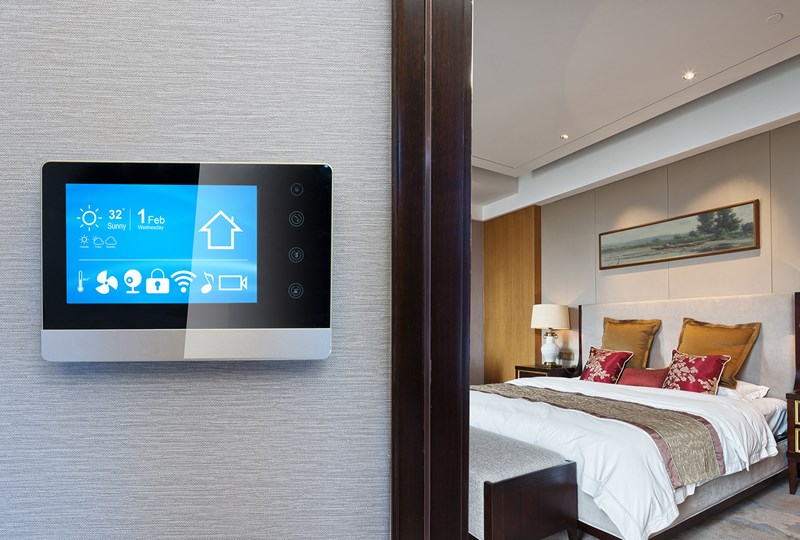
Key Insights
- There are many smart products available to perform different tasks around your home — and some have gotten better at integrating with each other
- Consider what problems you’re trying to solve when shopping for smart home technology
- Investing in smart home tech can lead to energy savings in the long run
For years, buzz has been building about “smart homes,” which are outfitted with devices and systems that automate and optimize based on the homeowner’s preferences.
While plenty of smart home devices — like programmable thermostats — have taken off, some homeowners wish that this emerging technology was less expensive and less isolated; many products have one function and do not “talk” to other products built and sold by competitors.
Don’t worry, we’ve got you covered. Here are insights you can use if you are hoping to purchase smart home devices for your house.
Note: Edina Realty is neither endorsing nor recommending these products. Please check with product retailers to verify current product prices.
Amazon Echo and Google Home
If you love Apple’s “Siri,” then you’ll feel right at home putting the Amazon Echo or Google Home to use. Both are speech-activated smart home devices that can respond to hundreds of requests and help you automate basic tasks throughout the day.
Amazon and Google are both hoping that their product will be the “hub” for your smart home, and their goal is for you to go through Google Home or Amazon Echo to control your refrigerator temperature, your home’s security system, entertainment streaming and more. Their healthy competition to control the marketplace means you get to take advantage of a growing list of integrations.
Pricing:
- Amazon Echo Plus with built-in smart home hub: $149.99
- Google Home: $129.00
Top products for safety
It’s a common desire to purchase the newest, “shiny object,” when creating a smart home, so be sure to limit your purchases to products that solve a real problem in your household. Here are some top-rated products that help with issues of safety.
Smart locks
If dozens of people have your garage code — from the nanny to your kids’ friends — how safe is your home, anyway? Rather than giving keys or an entry code to your house cleaner, the math tutor or even your houseguests, you can fully control entry for every party that enters and exits your home. Many keyless entry devotees swear by August Smart Lock, which starts at around $149.
Smoke detectors and carbon monoxide alarms
The Nest two-in-one smoke alarm and carbon monoxide detector is easy to install, and it has an in-person alarm as well as text alerts if the alarm goes off. The peace-of-mind of getting alerts when you’re not home is worth the price, and Nest even sends an alert to your phone if the battery is running low. The second generation of this device starts at around $120.
Security cameras
With an outdoor security camera, you can check who’s at the front door before answering. Canary ($169 plus membership fees) is considered the gold standard in smart security cameras, but new products, like the EZVIZ Mini O ($89.99), are also getting good reviews for the price.
Top products for efficiency
Part of what makes a device “smart” is that it can help you minimize energy use in your home. Below are a few top products that will pay for themselves over time.
Smart light bulbs and switches
Worried you’ve left a light on, or too lazy to get out of bed to turn off the bathroom light you errantly left on? There are two products that can help you solve this issue.
Smart light switches, like the Belkin WeMo ($49.99), can require installation but are then controlled by a smart home hub (like Amazon Echo) or your smartphone. Because it’s controlled by Wi-Fi, you can turn the switch on and off even when you’re not home.
Updating every light switch can get pricey, so you can also purchase smart light bulbs, which can be controlled via Wi-Fi or Bluetooth. Wi-Fi-controlled bulbs, like those found in the popular Philips Hue system, are more expensive and generally require you to purchase a larger system. The Hue starter kits begin at $69.99, and additional single bulbs start at $29.95.
GE’s C-Life smart LED bulbs ($74.99 per four bulbs) are another option, but you’ll need to be at home controlling them by Bluetooth to turn them on and off.
Smart plugs
We all have that one outlet — the one connected to the clothes iron, the curling iron or the coffee pot — that we fret over when we’re at work. Or what about the outlet connected to the Sony Playstation, which is likely using up “vampire energy” while you’re away?
While replacing every outlet in your home would be a significant investment, upgrading your main problem outlets can be an inexpensive, effective way to bring down your energy use (and anxiety). The TP-Link Wi-Fi Smart Plug ($29.99) connects to both Amazon Echo and Google Home, or you can control it via your smartphone.
Programmable thermostat
With their smart thermostat, Nest was one of the first players in the smart home market. The Nest thermostat ($249) can be controlled from near and far, and it learns your preferences over time to help you save money. If you’d prefer a cheaper alternative, the EcoBee 3 Lite ($169) is a nice option for the price.
With new tech products emerging every day, it’s safe to assume that smart home technology is here to stay. So if you’re trying to decide which smart home options are best for you, remember to consider your lifestyle, your challenges and your goals before stocking up on the latest gadgets.
If you’re feeling like a smarter move might be to buy or sell your home, reach out to our customer care team today to plan your next steps.








